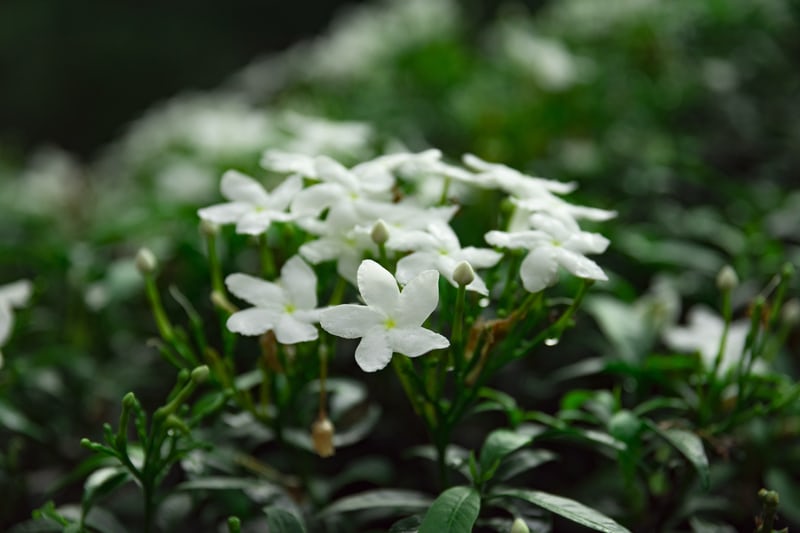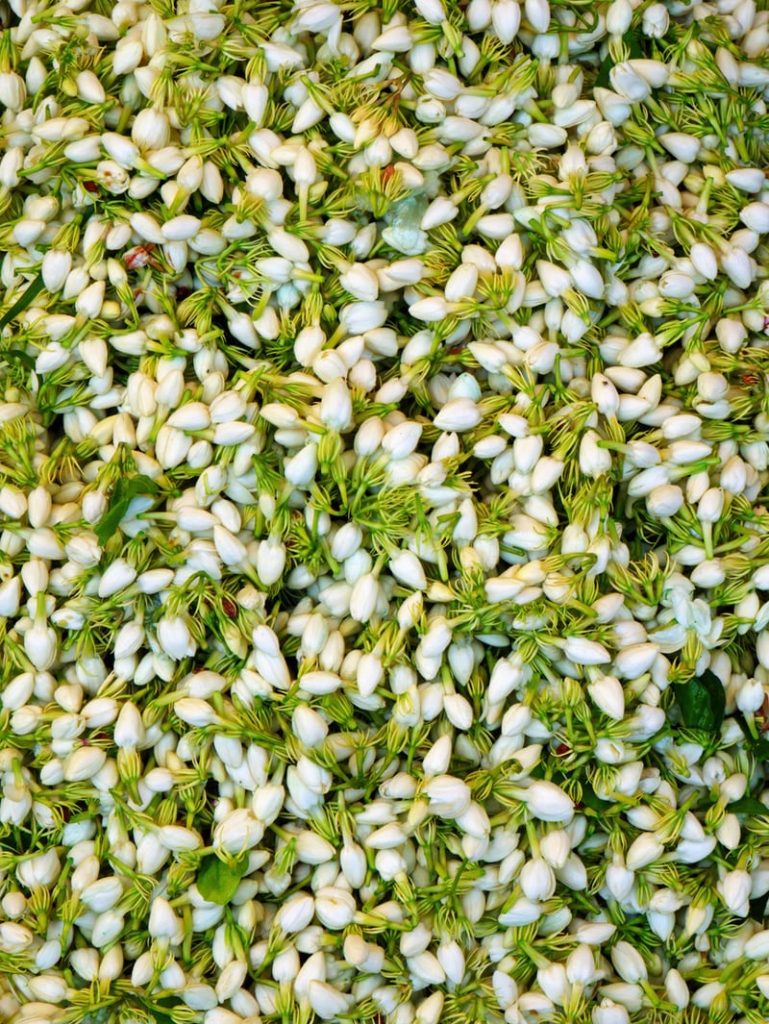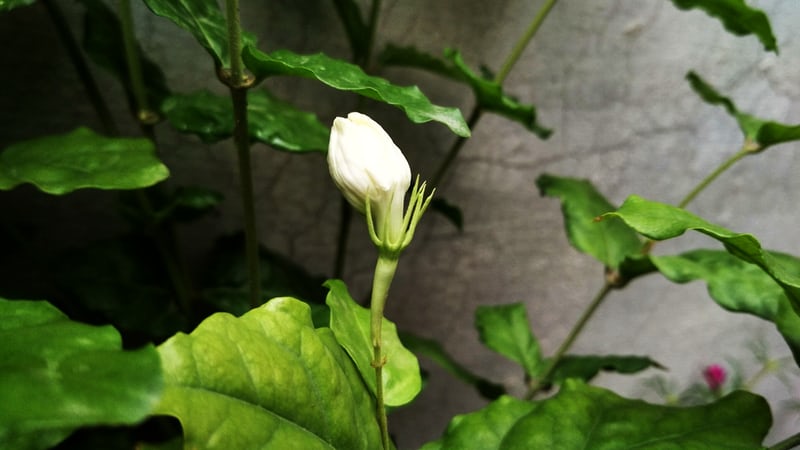Jasmine is well-known and is widely cultivated for its exotic fragrances. Delicate and dainty with small flowers, these evergreen plants may be vines or bushes. The tropical smell and sweet blossom add a natural scent to the air and attract bees. Jasmine flowers are usually white, although some species are yellow, cream, red, or pink. There are over 200 species of jasmine plants, most of which make a delicious fragrant addition to the garden.

How to Grow Jasmine
Planting Jasmine is easy. Just follow these simple steps.
- Soak the jasmine seeds in water for 24 hours.
- Plant the seeds in slightly moist soil. Cover the seedling tray or pot with plastic to retain moisture.
- Put it in direct sunlight.
- Keep the soil moist till the seedlings sprout.
You can also propagate Jasmine using stems. For this, take a healthy stem and remove the leaves at the lower section. Now, carefully insert the stem in moist soil so that at least two nodes are in the soil. Do not water thoroughly. Cover the pot inside plastic to maintain humidity and moisture. Put it in direct sunlight and open the cover periodically. After 5-6 weeks when new growth will emerge take out the pot and let it remain in indirect sunlight for a week.
Caring for Jasmine
Jasmine is not particularly hard to care for but requires vigilance.
Sun
Jasmine needs full sun to partial shade. They do not like full shade locations being a warm environment lover.
Soil
Jasmine prefers well-drained and moderately fertile soil.
Water
Jasmine flowers that are outdoors should be watered once a week. If it is unusually dry or hot, increase the frequency, but let the soil dry out in between. If your jasmine is indoors, make sure the soil is moist- but make sure it’s not soggy. Water it once the top 1 inch of the soil is dry.
Fertilizers
Fertilize the jasmine plant in spring just before the new growth appears.
Pruning
Prune jasmine plants after flowering. To prune jasmine, cut out the dead and diseased stems from the plant. Also, remove the stems that no longer flowers. Proper pruning promotes full foliage, rapid growth, and healthy plant.


Jasmine Varieties To Try
- Common Jasmine
- Arabian Jasmine
- Pink Jasmine
- Winter Jasmine
- Angelwing Jasmine
- Primrose Jasmine
- Star Jasmine
Uses
Jasmine has a wide variety of uses and health benefits. Some of them are listed below.
- Jasmine Tea is rich in antioxidants and helps to relieve stress, strengthen the immune system, control diabetes and reduce the risk of heart attacks.
- Jasmine essential oil works as an antiseptic and helps fight depression.
- Jasmine is used upon the skin to speed up wound healing and cure skin diseases.
- Jasmine is inhaled to reduce stress and improve mood.
- In food, jasmine is used to flavor beverages, baked goods, candies, and puddings.
- Jasmine is also used to add fragrance to creams, lotions, and perfumes.


FAQ’s about Jasmine
Is Jasmine annual or perennial?
Jasmine is a perennial plant that grows every year.
When do Jasmine blooms?
Jasmine blooms from spring until fall.
Is it possible to grow Jasmine in a pot?
Yes, you can plant young jasmine in a 6-inch pot with drainage holes. Keep the pot at a sunny location.
How long do Jasmine flowers last?
You can enjoy the sweet aroma of the flowers for several months provided proper sunlight, feeding, and watering to the plant.
How long does Jasmine seed take to germinate?
Seeds may take up to a month to germinate. Make sure you cover them with plastic to retain humidity and keep the soil moist by regular watering. Avoid watering the seeds too much.
